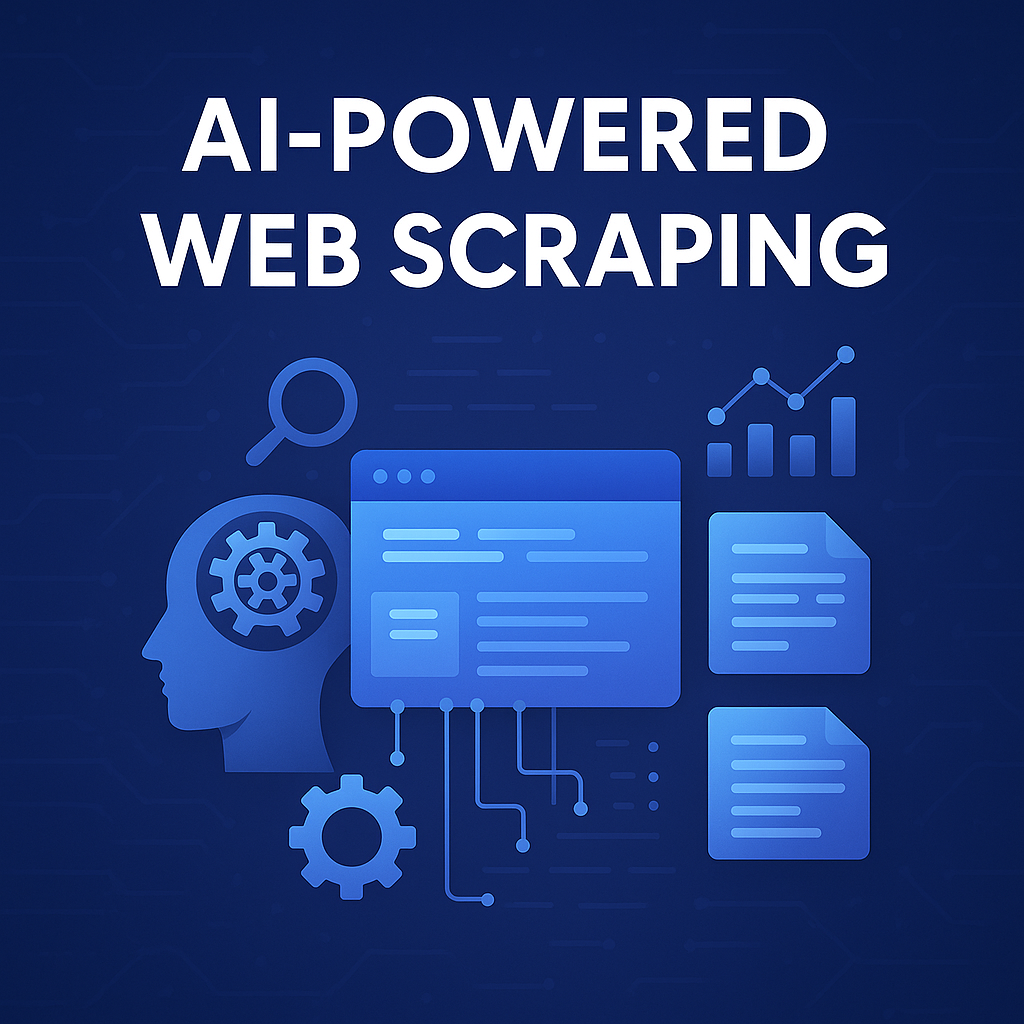Scraping the Web with AI-Tools
Web Scraping in a Nutshell
Web scraping is the practice of automating the extraction of data from web pages using software tools. This information can then be used for various purposes, some of which include price comparisons, market research, lead generation, and more. The general process consists of fetching the HTML content of a web page to extract the desired information. More complex form of web scraping requires simulating a web browser via tools like Playwright, Puppeteer, etc. and then interacting with elements on the web page to dynamically extract the data.
Traditional Web Scraping
The crux of the problem in web scraping is this: How to find the desired elements in the HTML page, whether that’s a button, a text element, a container, or anything else, before we can extract the desired information.
The traditional approach required developers to navigate to the web page that needs to be scrapped, meticulously examine its HTML body, and manually pick out the CSS selectors. Then, developers would hardcode these values in their programming scripts to scrape the web page.
Now, this approach is simple and straightforward. It’s been the default for many years. And it’s not inherently flawed. It works…until it does not.
The biggest limitation with traditional web scraping is that it is too brittle. It’s brittle because it’s too rigid. Because it relies on hard coded information about the webpage, information which is subject to change, it can break at any time. Change even a single letter of the class name that belongs to a targeted HTML element and the whole thing blows up.
You will have your boss breathing down your neck because some-random-site.com decided to renovate their website for the fifth time this month. And even if you get on top of things and update your code, how long will this new security last?
AI-Powered Web Scraping
Say goodbye to a wonky scraping foundation built using predefined CSS selectors and regular expressions which is liable to break at the slightest structural change. Using AI for web scraping allows you to write scraping logic that is resilient to all kinds of changes. By leveraging LLMs and machine learning, which can understand the context and structural layout of an HTML page, developers can save themselves the headache of reprogramming their scraper.
There are many AI-tools out there — Crawl4AI, AgentQL, ScrapeGraphAI, to name a few — which bring the power of AI and LLMs to the world of scraping. These tools leverage AI in many forms, including doing things like converting convoluted HTML structures into human-readable markdown files which are easier for LLMs to parse and understand, replacing the need for predefined CSS selectors by allowing developers to write prompts to target the necessary data and elements, and generating structured output that can be easily plugged into an existing application or an existing pipeline.
AI-tools also allows your software to bypass CAPTCHAs, IP blocking, and various other increasingly sophisticated anti-scraping measures that websites implement. This is due to AI-models’ ability to mimic human-like behavior and browser patterns.
Drawbacks
Does this mean everyone should immediately switch to web scraping with AI and leave traditional web scraping in the past? No.
Like everything else in life, for everything you gain, you must give something. Nothing is without consequences. So it is with AI-powered web scraping.
One of the biggest drawbacks of relying on LLMs and other AI-tools for web scraping is that this route can be costly as it is resource-intensive. A single scraping session may require multiple API calls to some AI-library, which when scaled, could quickly drive up the costs.
While LLMs are increasingly becoming more accurate, they are still prone to errors or “hallucinations.” There is a chance for LLMs to misinterpret the structure of the HTML in front of them, especially when faced with a layout or type of content that it is unfamiliar with. Therefore, accuracy is something that should be taken into consideration when dealing with AI-tools.
Conclusion
While AI-powered web scraping provides a massive advantage over traditional web scraping methods by providing resiliency, speed, and convenience, it’s not the perfect solution. The field of AI web scraping is still evolving and new discoveries are being made at each step. The decision of whether or not to adopt AI in web scraping is unique to each situation and depends on the scope and complexity of the project.

